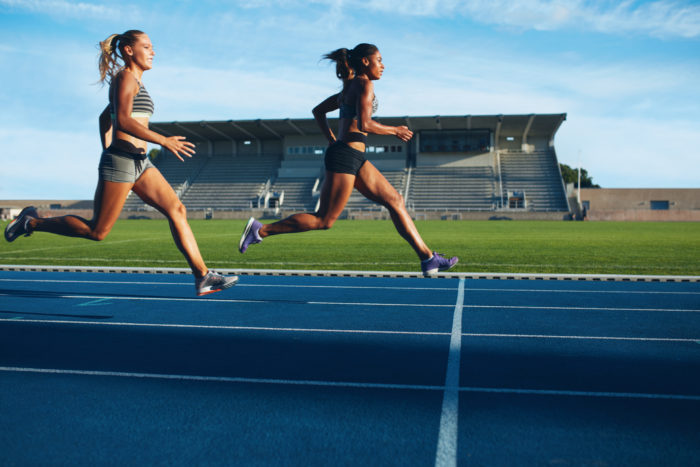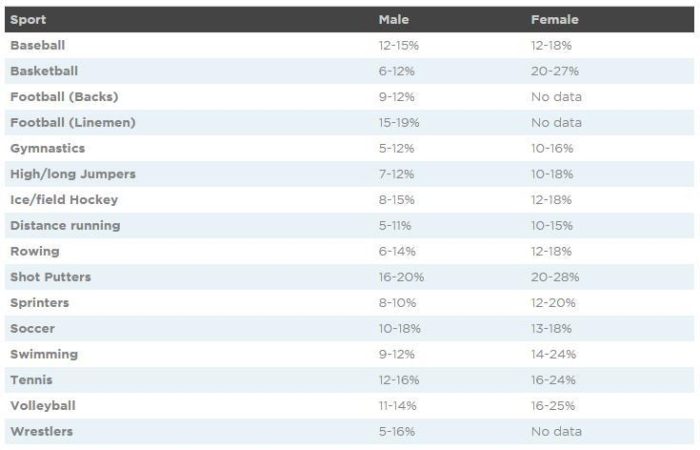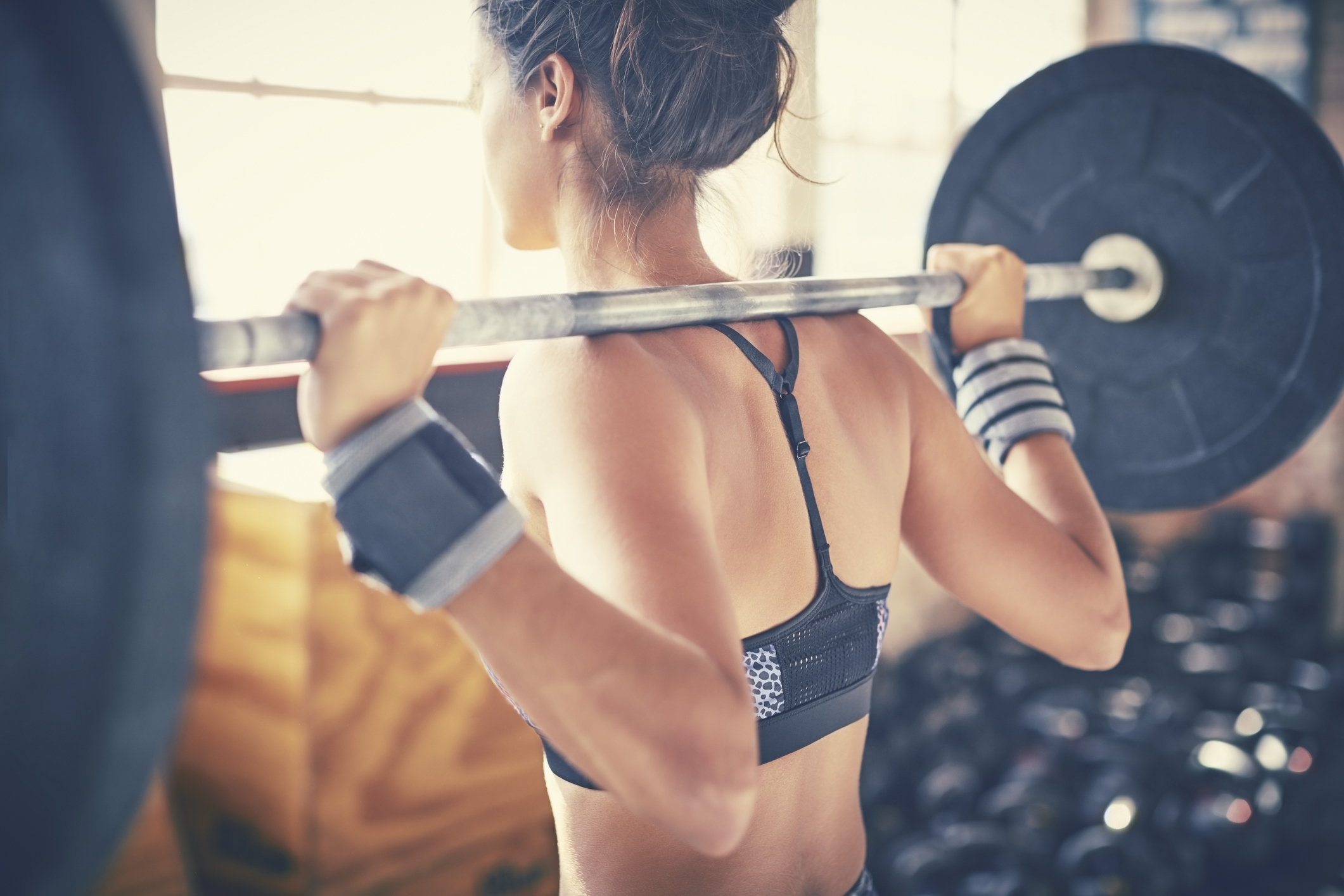This post may contain affiliate links.
While it’s hard to estimate how many active women are dealing with a missing period, it’s undeniable that amenorrhea is a huge issue in the women’s athletic community.
A recent article by Outside Magazine explained how common the loss of menstrual function is in competitive athletes. In it, they wrote:
“Researchers estimate that as many as 60 percent of exercising women may experience one component of the female athlete triad, which includes disordered eating, loss of a menstrual cycle, and loss of bone density.
When an athlete’s nutritional intake doesn’t meet the body’s needs, whether due to reduced dietary intake—intentional or not—or increased exercise, the body shuttles resources to systems that are essential to survival, suppresses energy-intensive processes like menstruation and growth, and alters hormone levels.”
Amenorrhea alone can be alarming, and it can be a double whammy when you are trying to get pregnant.
Whether your goal is to conceive or to regain your monthly cycle, diet and lifestyle modifications may be the key to bringing your hormones back into balance.
Here are a few strategies you can take to regain your period and improve fertility, especially if you’re an athlete.
Learn how athletic women can get their periods back WITHOUT birth control in my new FREE TRAINING!
1. Fuel your body with sufficient calories
The number one reason why athletes lose their periods is an imbalance in calories consumed and calories burned.
Chronic undereating can cause period problems in any woman, but hormonal problems are further exacerbated in female athletes who are burning a high amount of calories.
Fueling for performance can be difficult for a couple of reasons.
First, it is easy for female athletes to underestimate the number of calories needed to adequately fuel their performance. In our diet centric culture that views low calorie as synonymous to healthy, it is not surprising that many women are unintentionally and chronically undereating.
Dr. Lara Briden, an ND specializing in hormone repair, summed it up perfectly in one of our recent podcasts:
“I think we have this pervasive message that woman have to eat like birds, that’s sort of [seen as] a good thing, and you have little salads and little smoothies. That’s not enough food to get a period.”
This “bird-like” style of eating becomes especially damaging when coupled with the added stress of high levels of physical activity.
Reproduction is an energy-expensive process. Women need adequate calories to achieve enough of an energy reserve to promote fertility. A monthly period lets you know that you have the energy reserves to support a developing baby. (This is a big reason why you should reconsider using the Pill to resume a monthly cycle. It’ll mask underlying issues with energy imbalance.)

If we look at this through an evolutionary lens, women adapted to famines by shutting down non-essential processes like reproduction. If energy is scarce, your body knows that it needs to allocate all stored energy for survival. Reproduction takes a back seat when you are undereating.
And what tells your body that you have enough energy for reproduction? Hormonal signaling, especially from leptin and insulin. These hormones give your body the message that you have the necessary energy to reproduce.
Leptin is a hormone produced by adipose (fat) cells that acts mainly on the hypothalamus to signal that long term energy stores are adequate for fertility. The amount of leptin produced is proportional to the amount of fat mass.
So if you have a body composition that is very lean with a low percent body fat, you may not have a robust enough leptin signal to stimulate the reproductive process.
Woman need body fat to produce enough leptin for reproduction. Scientist Rose Frisch made this connection between body fat and fertility. She proposed the body fatness theory of fertility where she pinpointed that women need to have at least 17% body fat to menstruate and about 22% body fat for fertility.
This isn’t a black and white number for all women, but if you’re not menstruating and you’re under 20% body fat, that could be a big reason why.
Convincing a lean athlete to gain fat mass for fertility can be tricky since a lean body frame usually helps them boost performance. Looking at data from the NCAA of common body fat percentages of female athletes, it becomes clear why many competitive athletes struggle with hormonal imbalance. Long-distance runners, gymnasts, soccer players, rowers and track athletes seem to be at higher risk of hormonal issues due to their lower % body fat mass.

Source: https://www.inbodyusa.com/blogs/inbodyblog/78720577-is-there-an-ideal-body-composition
When pregnancy becomes the goal, many female athletes need to gain body fat and may suffer a slight dip in performance to achieve optimal hormonal balance. If your body fat percentage is low and you are struggling with infertility, it may be a good idea to consume a calorie excess and/or lower the intensity of your workouts until you reach a more fertility promoting body composition.
If you are still having amenorrhea and you are normal weight with a healthy amount of body fat, you could still be undereating.
In fact, some women can have trouble losing weight and even gain weight when they are chronically undereating due to the down-regulation of thyroid hormones that slow down our metabolic rate. This is especially prevalent in women who are training hard.
No matter what your body looks like, it’s incredibly important to match caloric intake to your activity levels.
With our calorie-cutting culture promoting severe calorie deficits in trendy magazines, women are pre-programmed to underestimate calories. It is common for a female runner who puts in 30 miles a week may feel like 1800 calories a day is enough to fuel her training. This is simply not the case.
To determine how many calories you actually need, check out this post.
Finding your optimal calorie intake can also take some tweaking and experimenting. You can use the tell-tale signs of undereating like blood sugar swings, feeling cold, hair loss, constipation, mood swings and sleep troubles to help guide you in finding the optimal calorie intake.
Learn how to get your period back WITHOUT birth control in my new FREE TRAINING!

2. Don’t skimp on the carbs
You may think I’ve been beating the carbohydrate topic to death, but chronic low carbohydrate intake is one of the biggest problems I see in my patients with amenorrhea following restrictive Paleo or primal style diets.
There are two main reasons why Paleo and primal eaters are prone to eating low carb.
The first reason is that many Paleo leaders view the insulin-stimulating effects of carbohydrates as a recipe for insidious weight gain (which is not the case). Therefore, the recipes and content are tailored more towards a lower-carb diet.
Insulin signaling is actually a promoter of reproduction. Where leptin is an indicator of long term energy stores in fat tissue, insulin is a signal of short term energy status. Essentially, insulin and leptin tell our bodies that we have the resources to make and care for a baby.
Carbs are by far the most insulin-stimulating macronutrient, while fat produces a very small insulin response. Therefore, if you are eating a high fat, very low carb Paleo diet, your insulin levels will be low. With weak insulin signaling, your body senses that resources are limited and downregulates sex hormone production.
Insulin also stimulates the production and activation of thyroid hormones that play a critical role in reproduction (see tip #3).
In other words? Insulin is not the enemy! And, carbs are usually necessary to achieve an adequate insulin signal.
In addition, every woman has a unique set point that determines the amount of carbohydrates necessary to maintain a healthy hypothalamus pituitary ovarian (HPO) axis. Strong communication between the hypothalamus, pituitary, and ovaries is necessary to produce sex hormones.
Dr. Briden states that “the HPO axis is very sensitive to nutrient intake, both calories and carbohydrates.” The hypothalamus has glucose-sensitive receptors the help signal the release of luteinizing hormone from the pituitary that will increase the production of progesterone in the ovaries.
There is a direct signaling effect from carbohydrates that allows women to synthesize sex hormones.
Every woman requires a different amount of carbs to maintain a healthy HPO axis and recover from amenorrhea, and it may take some experimentation to figure out how many carbohydrates you need.
Remember: increasing carbohydrates won’t magically correct amenorrhea and fertility problems overnight. It takes ovarian follicles (the little sacs in the ovaries that contain the developing egg) 3 months to develop. So it typically takes at least that long to achieve menstruation after increasing carbohydrates in your diet.

The second major reason why women are not consuming enough carbs on a Paleo diet is they underestimate the volume of whole food carbohydrates they need to consume. The Paleo lens can distort what is considered high carb.
Compared to other low carb Paleo eaters, you may feel like eating a banana, half a sweet potato, and some berries is eating high carb. But this is still low carb outside of the Paleo bubble.
Just because you are eating a sweet potato and a banana every day doesn’t mean you are getting enough carbs. I try to start my patients at around 40% of their calories from carbohydrates which usually puts a woman’s carb intake at 200 grams a day or higher. 200 grams of whole food carbs is a large volume of food and may be difficult for some clients to achieve at first.
Even I can struggle to reach my carb goals if I am not actively paying attention to my intake. Paleo carbs tend to be fibrous and filling. It may take some time for your GI tract to adjust to the increase in volume. It may be helpful to try to increase low fiber carbohydrates like maple syrup and white rice to boost carbohydrates without digestive discomfort.
While the vast majority of women can benefit from eating a diet consisting of 40% carbohydrates or higher, women with an insulin-resistant type of PCOS may feel better on a lower carbohydrate diet. If insulin resistance is present, working with a practitioner to determine the appropriate carb intake is a good idea.
Learn how to get your period back WITHOUT birth control in my new FREE TRAINING!

3. Support thyroid function
Thyroid hormones are critical for a healthy metabolism and fertility. Thyroid hormones increase the number of LDL receptors in our cells allowing us to pull cholesterol out of the bloodstream into our cells. This cholesterol can then be converted into sex hormones.
If thyroid hormones are low, you won’t have enough cholesterol in the cells to produce the amount of sex hormones needed for fertility. Low thyroid function can contribute to amenorrhea.
Supporting thyroid hormones and correcting any dysfunction is a must when trying to rebalance sex hormones. Consuming foods rich in thyroid supporting nutrients like iodine, selenium, vitamin A and iron can help promote healthy thyroid hormone synthesis.
As I mentioned above, insulin and leptin also play critical roles in thyroid function. So if you are undereating calories or carbohydrates, you will also fail to produce adequate thyroid hormones.
Unfortunately, many thyroid issues can slip through the cracks if your practitioner is relying solely on TSH levels to diagnose dysfunction. Thyroid stimulating hormone is released from the pituitary and communicates to the thyroid gland to produce the thyroid hormones (T4 and T3).
Many women can have normal TSH levels and still have low thyroid hormones. That’s why it is so important to run a full thyroid panel with antibodies to achieve a complete picture of thyroid function.
Learn how to get your period back WITHOUT birth control in my new FREE TRAINING!

4. correct nutrient deficiencies
There are dozens of nutrients that are helpful in healing from amenorrhea, especially athletes. And many of these nutrients are ones we don’t get enough of in our daily diet.
Fat-soluble vitamins A, D, and K2 are essential for both general and reproductive health. Vitamin D has been shown to increase pregnancy rates in women undergoing IVF and has been shown to increase menstrual frequency and improve metabolic dysfunction in women with PCOS. Vitamin D appears to play a role in the production of estrogen and progesterone.
But like many other nutrients, too much vitamin D may prove to be detrimental to reproductive health since high levels of 25 (OH) vitamin D levels have been associated with endometriosis. I typically like to see my patents 25 (OH) vitamin D levels between 30-50 ng/ml.
Like vitamin D, vitamin A has been shown to have an important role in reproduction. In addition, vitamins A and K2 are needed to help optimize vitamin D function. Eating whole foods rich in these nutrients and making sure to get adequate sun exposure can help create optimize reproductive hormones. Liver, fatty fish, cod liver oil, organ meats, eggs, and pastured dairy products are rich in fat-soluble vitamins.
A deficiency in zinc, iodine, or vitamin D in isolation can cause amenorrhea. Sometimes fixing your period problems can be as easy as correcting one of these nutrient deficiencies.
Learn how to get your period back WITHOUT birth control in my new FREE TRAINING!

5. Make stress management a daily routine
It’s well known that stress can cause the disruption or total loss of menstrual function in women. Human bodies were designed to prevent pregnancy during times of stress. Missing a period here or there is not that big of a deal, but if you are unable to manage your stress levels, your reproductive health will always suffer.
Elevated androgens like DHEA-S and DHT affect women’s menstrual function and fertility. While the ovaries are typically blamed for elevated androgens in found PCOS, it’s estimated that 20–30% of women with PCOS have adrenal androgen excess. The adrenal glands produce all the DHEA-S and 80% of the DHEA in the body. The adrenals also produce 50% of androstenedione and 25% of circulating testosterone. Since DHEA-S and 11-androstenedione are not secreted by the ovaries, they are used as markers of adrenal androgen secretion.
So when we’re under a lot of stress over a long period of time, our adrenals crank out androgenic hormones that can disrupt our menstrual cycle and cause a variety of other symptoms of PCOS as well.
And chronic stress is everywhere these days; from long work weeks and poor sleep, to new babies and aging parents, to constant negative thoughts about our bodies and physical appearance, women are bombarded by stress from every direction.
It gets even worse when a stressful training regimen is added on top of all of these.
We tend to think of stress as an emotional state, but in many female athletes, the physical stress of competition and training can create high cortisol production at the expense of estrogen production. Lowering the intensity and frequency of your workouts can help lower cortisol and boost estrogen synthesis to recover from amenorrhea.
Yoga, meditation, listening to music, laughing with friends and deep breathing are just a few ways you can incorporate stress management into your daily routine. Giving yourself permission to have some unstructured and unproductive “me time” at least once or twice a week can also be important to reduce stress levels.
And don’t forget how important it is to incorporate rest and recovery as part of your training regimen.
Bottom Line for amenorrhea in athletes
Pregnancy and regular menstrual cycles can be painfully elusive in female athletes. Making sure you are well nourished with a diet sufficient in calories and carbohydrates can be the first step in regaining hormone balance.
If you are still struggling to achieve balance, exploring possible thyroid problems or micronutrient deficiencies could be the next best step. Trying to conceive can be stressful, so making sure to reduce emotional and physical stress from your daily life is also critical.
If you’re an athlete struggling with amenorrhea, you’ll learn the exact steps I use with my clients in my new FREE TRAINING!
If you want personalized help tailoring your recovery plan for your exact needs, work with me one-on-one.
If you learned something about amenorrhea in athletes, or have more questions about this important topic, share a comment below.
And don’t forget to share this article with a woman in your life who needs this information!

+ show Comments
- Hide Comments
add a comment